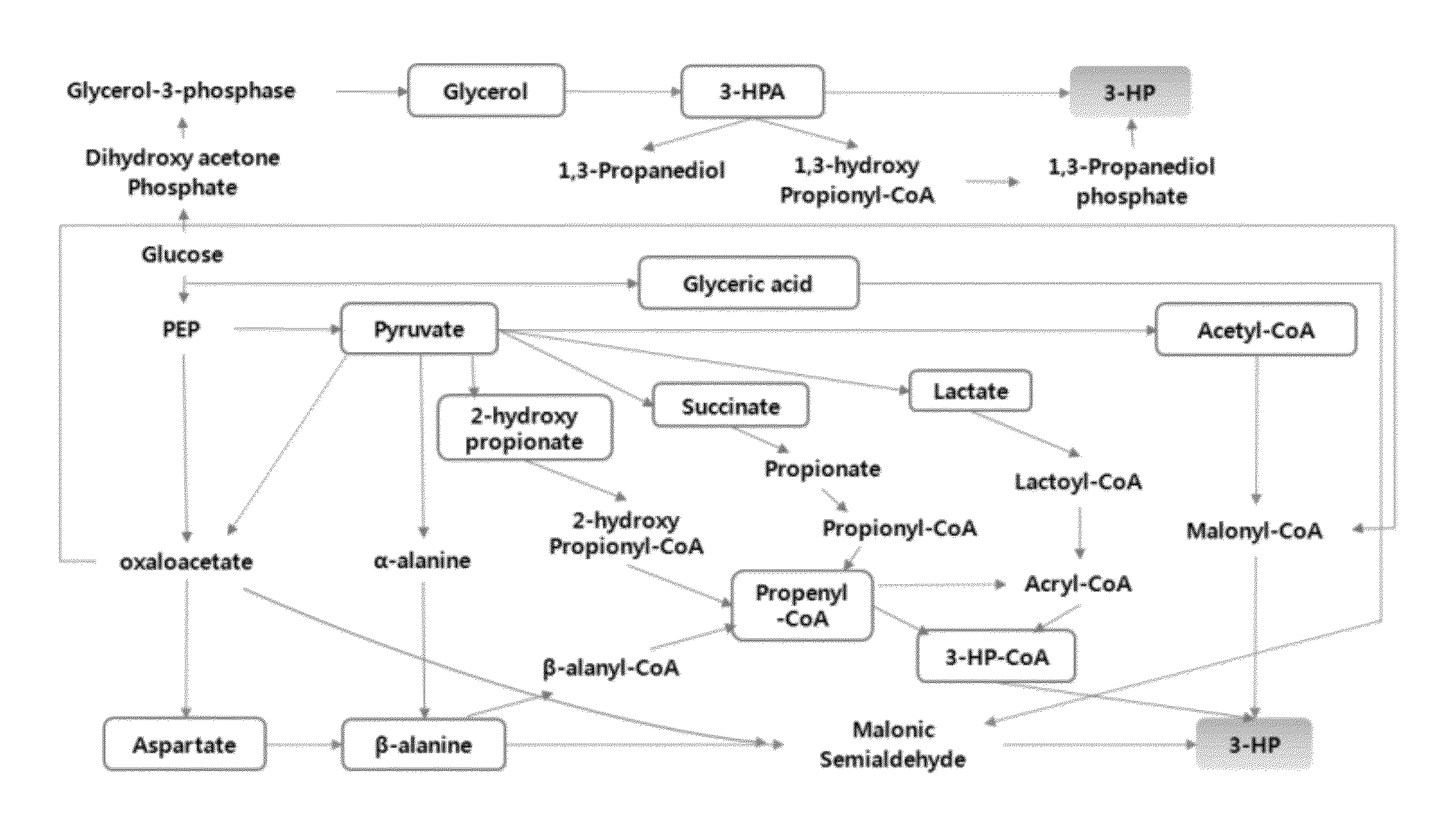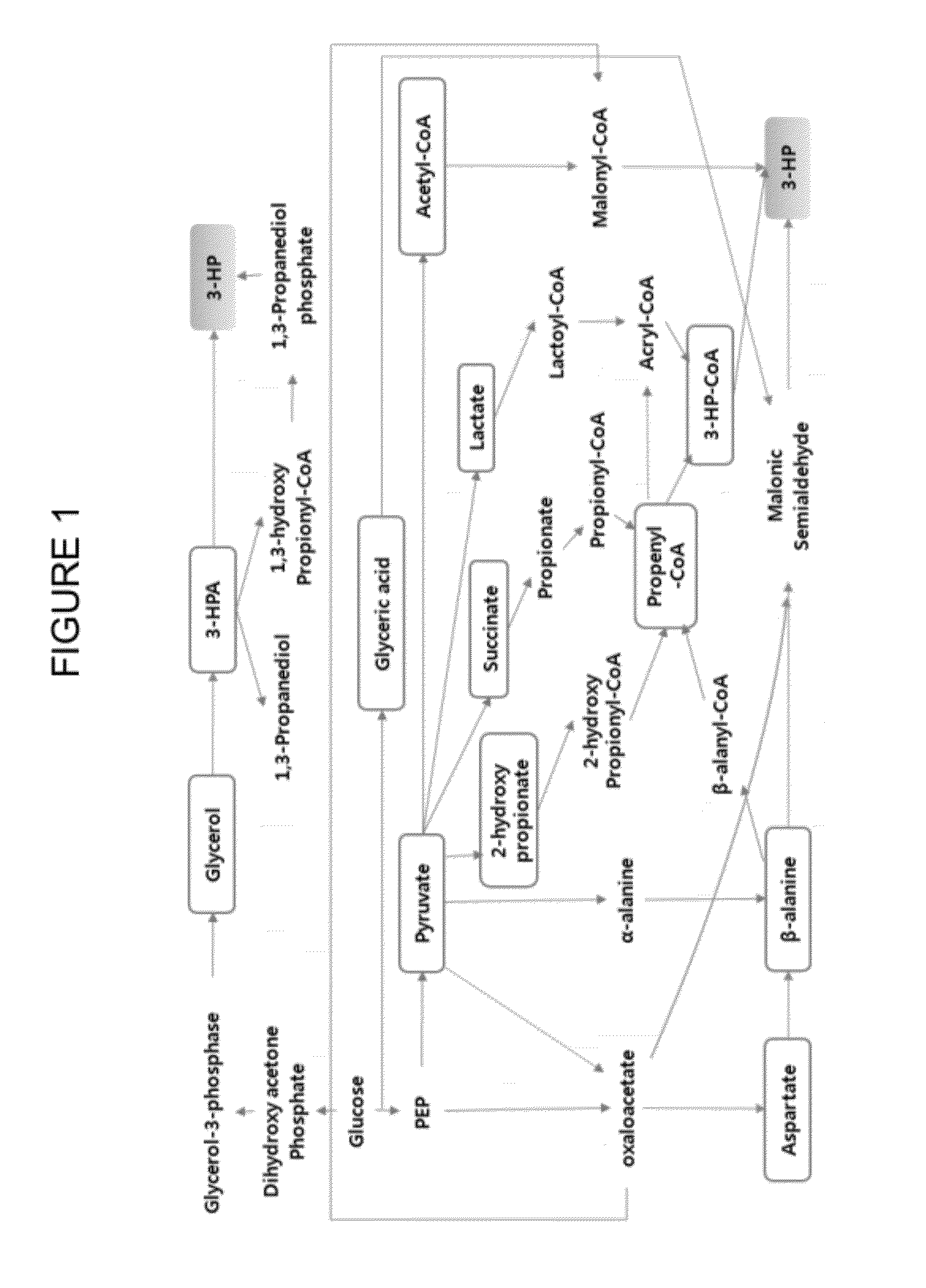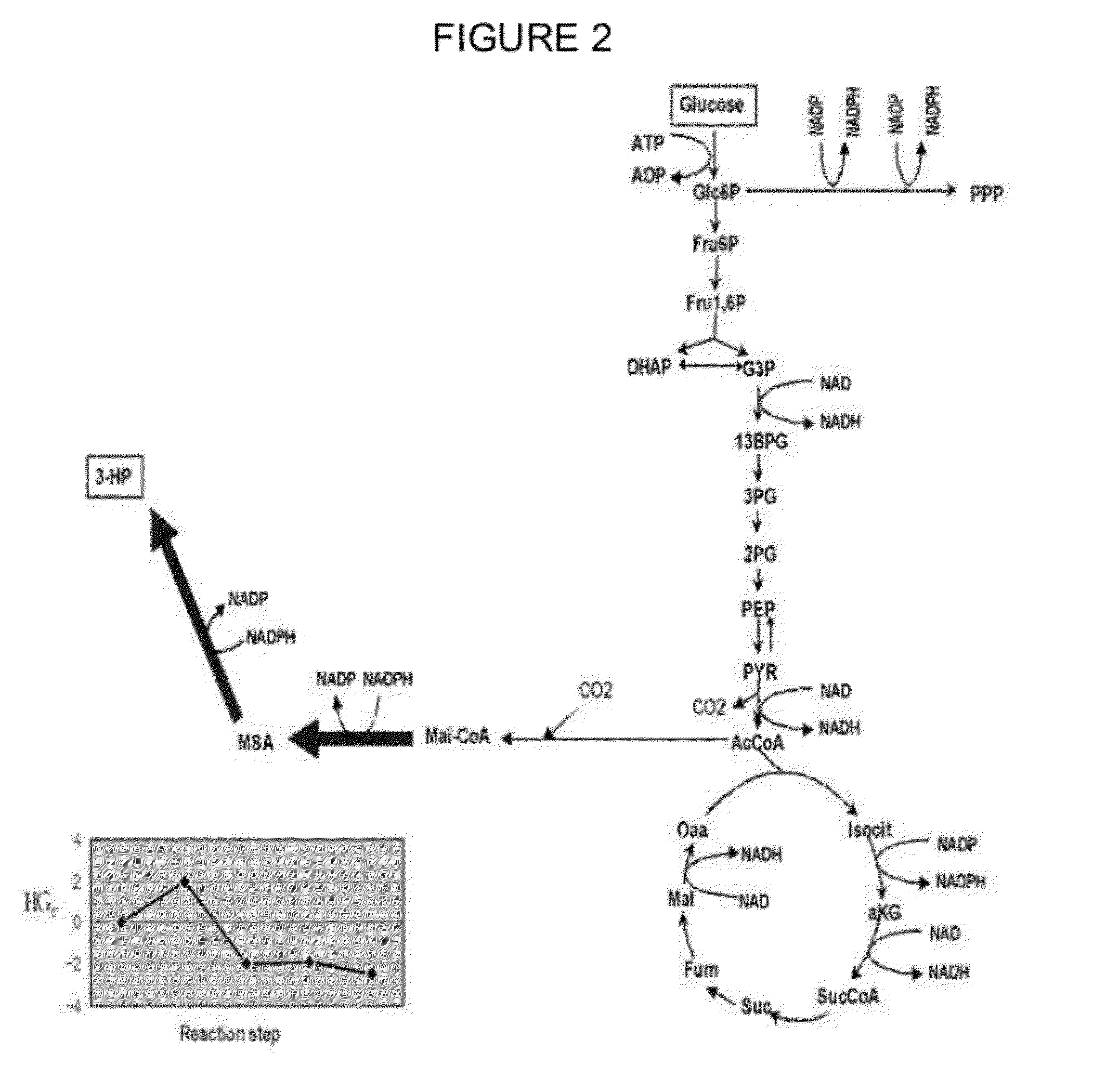Method of producing 3-hydroxypropionic acid using malonic semialdehyde reducing pathway
a technology of malonic semialdehyde and production method, which is applied in the direction of microorganisms, biochemical apparatus and processes, and enzymes, can solve the problems of low production yield and productivity, difficult to effectively control the process, and inability to produce bio-based fuels, etc., to achieve high yield, improve the producibility of 3-hp, and solve the redox imbalance
- Summary
- Abstract
- Description
- Claims
- Application Information
AI Technical Summary
Benefits of technology
Problems solved by technology
Method used
Image
Examples
example 1
[0167](1) Cloning of M. sedula-Derived mcr and msr Genes
[0168]Polynucleotides for each of the M. sedula mcr and msr (“mm”) genes were synthesized by Bioneer (KR) with a codon-optimized sequence to permit optimal enzyme expression in E. coli.
[0169](2) Cloning of E. coli-Derived pntAB and S. mutants-Derived gapN Genes
[0170]An E. coli pntAB polynucleotide sequence was obtained by E. coli genome polymerase chain reaction (PCR) (primers: 5′-AATT CCA TGG GA CGA ATT GGC ATA CCA AGA GAA C and 5′-AATT GGA TTC TTA CAG AGC TTT CAG GAT TGC ATC). A polynucleotide for the S. mutants gapN gene was synthesized by Bioneer (KR) with a codon-optimized sequence for expression in E. coli.
example 2
Construction of Recombinant Vectors
[0171]A. pJYmm01
[0172]The expression vector pCDFDuet-1 (EMD Chemicals) was used to construct a recombinant vector for expressing the polynucleotide with the codon-optimized mcr and msr (“mm”) genes. The pCDFDuet-1 was digested with NcoI and HindIII restriction enzymes, and an mm sequence, digested with the same restriction enzymes, was ligated into the vector, thereby obtaining a plasmid designated pJYmm01.
[0173]B. pBJmcr01
[0174]The expression vector pCDFDuet-1 (EMD Chemicals) was used to construct a recombinant vector for expressing the mcr gene of Chloroflexus aurantiacus. The Chloroflexus aurantiacus mcr gene was obtained by C. aurantiacus genome PCR. The mcr gene amplicon was digested with NcoI and HindIII restriction enzymes, and then ligated with pCDFDuet-1, digested with the same restriction renzymesto obtain the plasmid designated pBJYmcr01.
[0175]C. pJYacc01
[0176]The expression vector, pRSFDuet-1 (EMD Chemicals), was used to construct a rec...
example 3
Preparation of Recombinant E. coli for Producing 3-HP
[0188](1) Recombinant Strain
[0189]The recombinant vectors constructed in Example 2 were introduced into E. coli to prepare a number of recombinant strains. The vectors manufactured above were transformed into E. coli by electroporation.
[0190](2) Measurement of mcr Enzymatic Activity
[0191]In Journal of Bacteriology, December 2006, vol. 188, no. 24, p 8551-8559 (p 8552), when NADPH was used as a substrate for the mcr, the change in amount of NADPH into NADP due to the enzyme reaction was analyzed by a spectrophotometric assay.
[0192]A cell extract or purified enzyme was used. A predetermined amount of NADPH was added to a buffer, and the prepared cell extract or enzyme was added. The resulting cells were incubated at 65° C. for 5 minutes. Malonyl-CoA was added to start the reaction, and absorbance at 365 nm (A365) of samples before and after the reaction were measured. 1 unit of mcr enzyme represents the amount of the mcr enzyme oxid...
PUM
 Login to View More
Login to View More Abstract
Description
Claims
Application Information
 Login to View More
Login to View More - R&D
- Intellectual Property
- Life Sciences
- Materials
- Tech Scout
- Unparalleled Data Quality
- Higher Quality Content
- 60% Fewer Hallucinations
Browse by: Latest US Patents, China's latest patents, Technical Efficacy Thesaurus, Application Domain, Technology Topic, Popular Technical Reports.
© 2025 PatSnap. All rights reserved.Legal|Privacy policy|Modern Slavery Act Transparency Statement|Sitemap|About US| Contact US: help@patsnap.com



